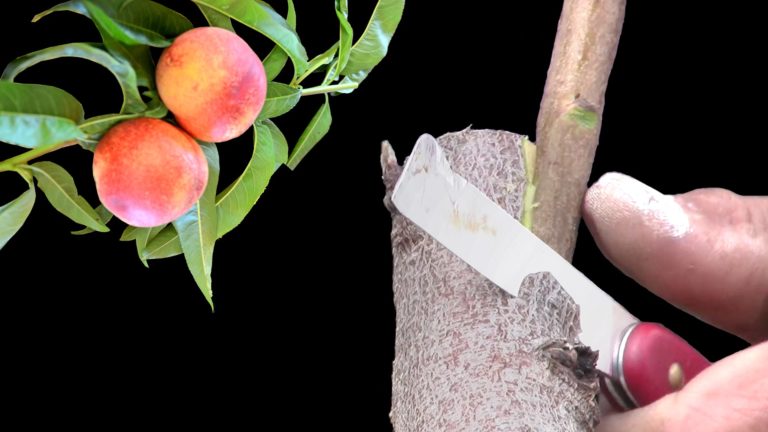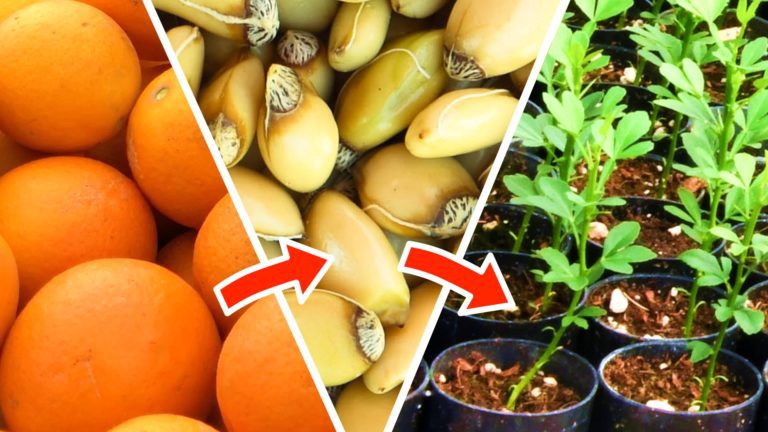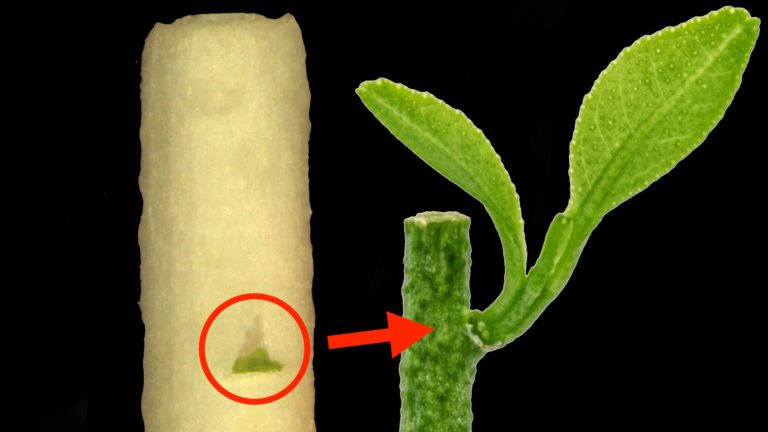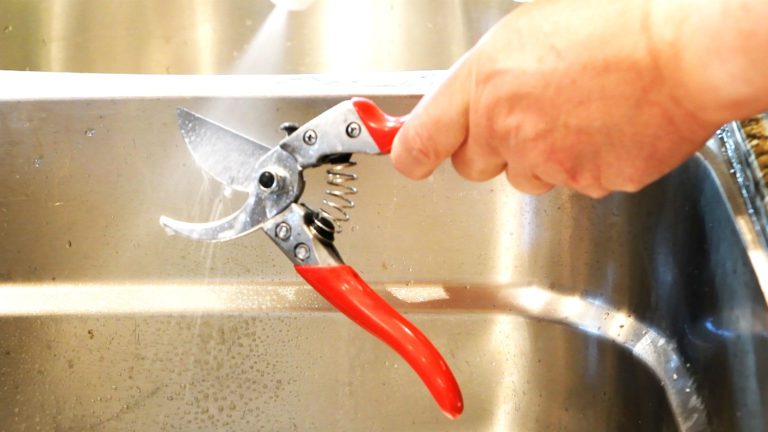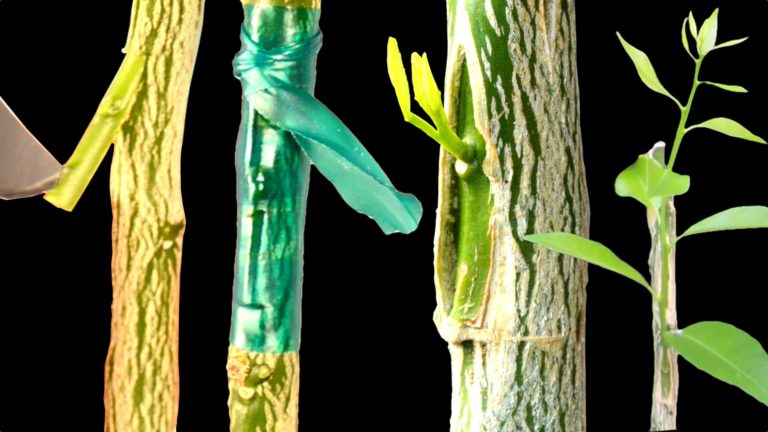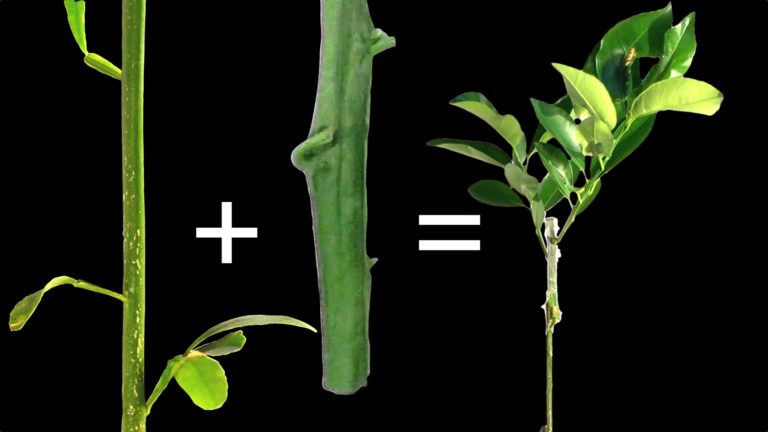Citrus Propagation and Disease in California – Your Questions Answered by Dr. Georgios Vidalakis
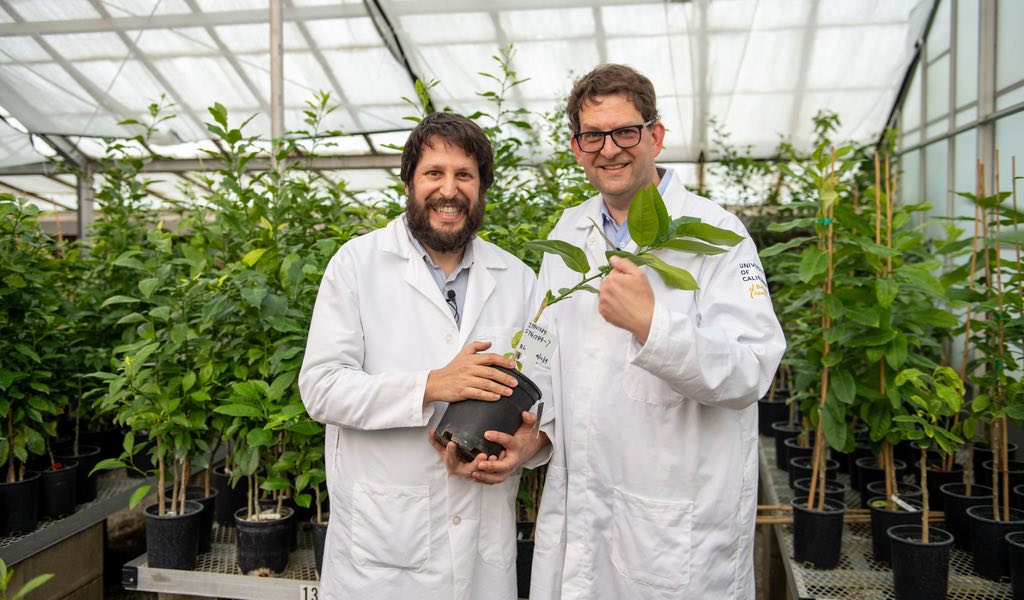
In the following video, I visited the historic 1907 Citrus Experiment Station in Riverside, California to get answers to reader and viewer questions on citrus propagation and disease. The questions were answered by Dr. Georgios Vidalakis, professor and extension specialist from the Department of Microbiology at the University of California, Riverside. Georgios is the Director of the Citrus Clonal Protection Program, a historic program that has been providing disease free citrus budwood for more than 80 years.
Below you will find the resources mentioned in the video as well as a transcript.
Resources
California Department of Food and Agriculture (CDFA) Hotline: 1-800-491-1899
University of California Agriculture and Natural Resources
UC Cooperative Extension
UC Master Gardener Program
California Master Gardener Handbook, 2nd Edition
Please note that the above link is an Amazon affiliate link, meaning that, at no additional cost to you, I may earn a small commission if you choose to buy the book via the link.
Citrus Clonal Protection Program
National Clean Plant Network
Citrus Disease and Propagation in California – Transcript
Grafting Citrus Trees with Backyard Budwood
Question: Could you explain the prohibition on grafting citrus using backyard budwood and when will that be over?
Answer: That's a good question, Dan. I think a better way to see this is not something temporary. It didn't just appear. This kind of rule has been in place since the 1930's when we made the scientific discovery right here at the Citrus Experiment Station that if you collect budwood from a sick tree and you propagate trees with that budwood, those trees are also going to be sick. So in the case of plant pathology these regulations are science based. It is not just a random governmental agency saying you cannot do this or you cannot do that. These days because we are battling another very important and catastrophic citrus disease, the huanglongbing disease of citrus or citrus greening disease, it was very important to remind the people in California that we should not propagate citrus trees from random sources because those sources could have, not only huanglongbing, but many, many other citrus diseases. So I do not expect an expiration. This is how we should propagate trees. We should propagate trees from mother plants that have been produced in a program like the Citrus Clonal Protection Program that we are visiting here today, where scientific developments over the last 80 years have given us the technology to produce strong, healthy mother plants for everybody to use and propagate their trees.
Question: What is the risk if someone takes citrus cuttings from their own property and propagates them to another citrus tree on their property?
Answer: That's a very good question, Dan. But always, you know, in questions of risk they are complicated. So let me give you an example. The first HLB tree in the state of California was a backyard tree that had 23 different grafts on it. And those were local varieties in that neighborhood and a local person was making those propagations. And that was the first huanglongbing tree in our state. With the spread of the vector of the disease — Asian citrus psyllid — all over our state, using budwood from trees that have been exposed to the disease and the vector and propagating that material and propagating the disease in your back yard; I don't think it's a very good idea. You can always go and buy a nice, strong healthy tree from a nursery or get clean budwood from the CCPP and start a beautiful healthy tree in your back yard.
Asian Citrus Psyllids, Huanglongbing, and Citrus Propagation
Question: How does using CCPP budwood help someone in an area where Asian citrus psyllids and or huanglongbing are already present?
Answer: Because HLB has been reported in your area, it doesn't mean that all the trees in your property have the disease. So you have to make sure you don't bring the disease into your property with budwood that is not clean. So you have to make sure you use clean budwood, in this case from CCPP, and that way you are propagating clean trees. So the psyllid that is in your area cannot take the disease from your trees and move it to other trees in your property or further out in other properties. So it's always the best practice to use clean budwood when you make trees for your backyard, regardless if you are in an area with HLB or the Asian citrus psyllid.
Question: Several people have asked me to do a video on air layering citrus. Could you explain why that's not a good idea.
Answer: The disease principles are the same between air layering and using budwood. If the mother tree you are using to make your air layers has a disease, the new trees you are going to make with air layering are also going to have the disease. So you keep propagating a disease in your property and also if an insect vector comes through your property it can spread the disease more within your property or to other properties. Also, self rooted citrus trees — trees that they are not grafted on rootstocks — usually are weaker trees, less productive trees that don't live as long as other trees. The citrus practice has changed from self rooted trees since the 1800's because the trees that were not propagated on rootstock, they were very sensitive to soil borne diseases and they had all sorts of production issues. So in general air layering from your own back yard trees is not a good idea.
Question: Are there any HLB resistant rootstocks or scions available, and if so how can the public get them?
Answer: Right now there is no resistant scion variety or rootstock to HLB. As soon as the research has discovered or developed such a variety, we will make sure we will create a clean source for it at the CCPP and we will make it available to everybody. Some reports from experimental hybrids or from commercial citrus outside California where the disease is widespread, they indicated there are some varieties and some rootstocks that behave a little bit better under the disease pressure. But these are not standalone observations. These varieties are grown into very sophisticated and complex production systems. It's not a classic system where you have a resistant variety and without any special manipulation is resistant to the disease. Unfortunately we do not have anything like that right now in our hands.
Citrus Disease Testing and Treatment
Question: How can people have their trees tested and treated for disease?
Answer: In the case of HLB, if any of you think you have a sick tree, an HLB tree in your backyard, please call immediately the hotline of the California Department of Food and Agriculture, 1-800-491-1899. In any other case, but including HLB, the University of California Agriculture and Natural Resources, UCANR, has in every county, a farm advisor locally. UCANR also has this beautiful program, the Master Gardeners, and there are very knowledgeable people trained by the University of California, and they know very well how to advise homeowners about all sorts of crops, not only citrus. In terms of treatment for HLB and for other diseases in the same category, what we call graft transmissible diseases — diseases that they are introduced into a tree by propagation. There is no treatment. That is why we always say you need to make your tree with clean budwood. That way you do not introduce diseases in your tree because after and if you introduce diseases there is no treatment for your tree.
Growing Citrus Trees from Seed
Question: Will citrus germinated from seed be resistant to disease?
Answer: Growing a citrus tree from seed doesn't affect the resistance to diseases. You cannot make a tree resistant to a disease, in this case HLB or in general for any other disease, just because you're growing it from seed. There is no change in the sensitivity of a citrus to a disease because it grows from seed.
Risk of Yard Waste and Compost to Citrus
Question: Can HLB be spread by municipal compost?
Answer: So Dan if we talk about fresh, green, yard waste, then HLB risk, yes there is a risk there because you can move the pathogen around and the psyllid. But after that yard waste has been processed properly, and has been composted you essentially have soil. So the HLB risk from composted materials is very, very low.
Grafting to an Infected Citrus Tree
Question: If I graft CCPP budwood to my infected tree will that cure the tree?
Answer: So if you graft CCPP budwood on a sick tree, let's say this budwood here is CCPP budwood and this is the tree in your property, this is a sick tree trunk and these are sick tree roots, what is going to happen is that — no, the CCPP budwood will not cure your tree. Actually the disease from the roots and the trunk of your tree will make the CCPP budwood also sick.
Replanting Citrus after Removing HLB Infected Trees
Question: If an HLB infected tree is removed and a new tree is planted in its place, will the new tree be infected?
Answer: The key element to the answer to this question is stump removal. You cannot just cut with a chainsaw your tree and then leave on the ground the stump of the rootstock. And this is a beautiful example in this pot where we had three plants that we finished working with, and we decapitated you can see the stumps of the seedling in this pot, and in this stump right here you can see shoots coming out in this one all fully developed shoot here and two more shoots here. And what's happening is the stump pushes this young shoot and this young shoot will do two things in your property. They will keep the roots under the ground alive of the sick tree, and if you come and plant your new tree, healthy tree next to them the roots may graft and the roots from the sick tree could transmit the disease to the clean tree. But most importantly these young shoots will attract the Asian citrus psyllid. And the Asian citrus psyllid will pick up the disease from the shoots, from the stump of the sick tree and transmit it to your new tree, or to other trees in your property or beyond your property. So it's very important to have complete stump removal and complete tree removal if a tree is sick with HLB before you plant a new tree in the same spot.
Diseases Spread by Citrus Seed
Question: Can citrus diseases be spread by seed?
Answer: Huanglongbing is not transmitted by seed. There are other diseases, however, that can be transmitted by seed. There is a very well-studied case of a virus that was actually discovered last year in California for the first time. And a citrus seed has many different layers and different parts. And in most cases, the citrus pathogens could be in one part of the seed, but it cannot find its way to the growing plant and infect the plant. So a pathogen or a disease could be seed-borne, could be part of the seed, but it's not seed transmitted. It cannot make the plant that growing out of the seed sick. But nevertheless there are citrus diseases that can be seed transmitted. Huanglongbing is not one of those diseases.
Cost to Produce Citrus Budwood
Question: How much does it cost to produce budwood compared to how much people pay for budwood?
Answer: Production of clean budwood requires a lot of resources. Our program operates with 14 different people. We have another 20 people doing research for us. Students to develop new technologies for diagnostics and budwood therapy. We operate at three different locations and facilities where everything begins here at the Rubidoux Quarantine Facility we're standing in front of future budwood sources. And as you can see, in these labels here, and these code numbers there is an indication that this specific budwood source tree in the last two years from 2017 went through introductory propagation and therapy and eventually was tested negative for all non-citrus diseases in the variety index screening as this code numbers indicate. And we also operate a diagnostic and research laboratory at the main UC Riverside campus, and we also have our foundation facility which maintains over 1,000 trees of 400 plus different citrus varieties for budwood distribution. Our annual budget is a little bit less than $1 million, that's operational budget. In addition to that there is overhead expenses and facilities expenses and so on. And our income from budwood sales last year was a little bit over $74,000. And as you can imagine, $74,000 can barely cover salaries and benefit of one person and they're by far less what is required to produce clean budwood source for citrus.
Funding
This article was funded by a grant from California’s Citrus Research Board.

